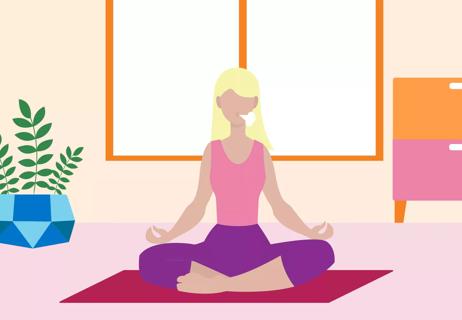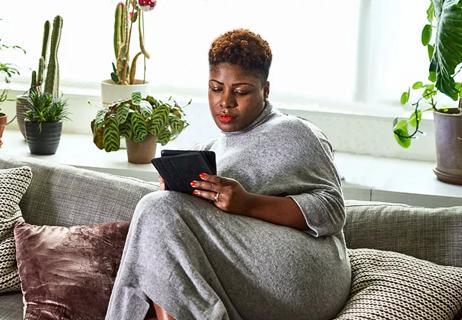Letting your tears out in a safe environment can relieve stress and strengthen your relationships

For some people, crying comes easily. You see a commercial about stray dogs who need a home, the sad music kicks on and you’re blubbering and reaching for the tissues. For others, the tears don’t come as willingly. Maybe that’s just the way you are. Maybe you’ve been told that “big kids don’t cry” too many times to be comfortable enough to let it out.
Advertisement
Cleveland Clinic is a non-profit academic medical center. Advertising on our site helps support our mission. We do not endorse non-Cleveland Clinic products or services. Policy
The American Psychological Association says women and people assigned female at birth cry an average of 30 to 64 times per year. Men and people assigned male at birth cry an average of five to 17 times per year.
And it turns out that letting your emotions flow out of your eyeballs can be cathartic — that is, expressing strong emotions can bring on some good, positive vibes. A good cry can reduce stress, bond you more closely with others and reduce physical pain.
But not all crying is created equal.
“Context matters when we think about the benefits of crying,” says health psychologist Grace Tworek, PsyD. “There’s a big difference between crying in a safe environment — say with your partner or your close friends — as opposed to crying in the supply closet at work after a tense meeting.”
We talked with Dr. Tworek about the health benefits of crying and the differences between a “good” cry and a “not-so-good” cry.
Though there has been some debate, researchers agree that crying is a uniquely human experience. (Turns out “crocodile tears” aren’t really on par with the emotions that lead to crying in people.)
There are three ways that people cry, and only one has an emotional basis. Those other kinds of tears are used to keep your eyes from getting dry and cleanse your eyes when you’re exposed to an irritant, like when chopping onions.
Advertisement
Emotional tears are the ones that are tied to our mental state. They can be tears of sadness, for sure, but they can also come on as an expression of joy, pride, frustration, anger and more.
“As adults, we generally tend to express big emotions through crying and also through things like laughter and surprise,” Dr. Tworek says. “Crying and other emotional expressions come as a response to an emotional rise. Our emotions and how we express them — verbally and nonverbally — are part of what makes humans unique.”
Researchers say the feelings that are most likely to conjure up a cry will vary by sex, age and culture. But universally, the most common feelings that elicit tears are hopelessness and helplessness, particularly in response to attachment-related events, like a death, breakup or moving.
So, even while our tears tend to come from a place of utter devastation and turmoil, it turns out that in the right context, crying can work as an emotional (and physical) cleanse of sorts.
Dr. Tworek helps explain the benefits to be gained from a good cry.
When something emotionally jarring happens in your life, say the breakup of a romantic relationship, it can seem as if a shield is being held inches away from your face. In order to move ahead or think about anything else, you have to mentally bob and weave around the shield. That can be stressful, exhausting and overwhelming.
Dr. Tworek says that after a good cry, your parasympathetic nervous system (the system of nerves in your body that allow you to “rest and digest”) can take over. That allows you to shift out of a “fight or flight” response. That shift can make you feel as if a weight is lifted and things become clearer.
“The shield probably doesn’t go away completely,” Dr. Tworek says. “But maybe now, it’s a few feet away, or it’s off to one side just enough that you can start to see around it.”
Researchers in the 1950s and ‘60s compared crying to a safety valve that releases “superfluous emotional energy or relief of tension.” Keeping the valve shut tight, they said, could cause a backup of negative energy that could be mentally and physically detrimental.
As babies, we cried to get the attention of our caregivers to ensure our needs were met — food, clean diapers, comfort and the like.
As adults, crying with the right people and at appropriate times can similarly create connections with others. It’s a sign that we’ve lowered our defenses and are comfortable with being vulnerable — not in a sinister or manipulative way, but in a human-to-human experience-sharing way.
“When we’re in a comfortable situation and we’re processing events together and talking to each other about what’s going on and sharing our emotions, that can oftentimes tie us together,” Dr. Tworek notes. “It can be a way that we bond to one another by creating an atmosphere of human connection.”
Advertisement
Some researchers suggest that tears have a place in human evolution, too. For our ancestors, crying could have been a way to increase bonds within a community and limit aggressive or violent tendencies among groups.
When a child stubs their toe or takes a tumble off their bike, parents can expect the tears to roll on in. Turns out, those kids may be on to something.
More than a cry for help (literally), conjuring up tears can also reduce the pain we feel, Dr. Tworek says.
“A lot of times pain and emotions can get wrapped together,” she continues. “If you’re feeling a lot of pain, you might feel frustrated, you might feel angry. After a cry, you may be able to manage some of those feelings and move past them, which can actually lessen the pain you feel.”
We actually have a certain level of control over the pain we feel. It’s called gate control theory, and the idea is that your mental state can influence your perception of pain.
“If we were already experiencing some sort of pain, but then something makes us feel really anxious or really overwhelmed, we flip on that switch into fight or flight, which just takes all our feelings over the edge. Everything can just feel so much more uncomfortable,” Dr. Tworek explains. “Crying can dampen that fight or flight response, so we’ll catch our breath and be able to relax.”
Advertisement
It’s a similar idea to guided imagery and other relaxation techniques. Slowing down your thoughts can release endorphins, which are our bodies’ natural painkillers.
Now, here’s the catch. Crying won’t have the same beneficial effect for all people. It’s also less likely to bring on positive effects when your tears leak out at uncomfortable moments.
“It’s a matter of context,” Dr. Tworek says. “Some people will be more comfortable crying by themselves where they won’t feel ashamed or worried about what other people think. Some people will feel better if their tears are comforted by a loved one.”
The comfort you get from crying can be shaped by how we’re socialized, Dr. Tworek notes. If you come from a family where emotions are shared openly, crying can feel more natural and acceptable. If your family had more of a “stiff upper lip” mentality, you’re probably less likely to feel relieved after crying.
Additionally, even for people who are comfortable with shedding a few tears, where you cry and around whom makes a difference in how you feel afterward. Crying at your desk after your good-for-nothing boss gave you a bad review probably won’t be very cathartic. But crying as a part of a healing process after experiencing a loss is more likely to be a comfort.
Advertisement
“It all comes back to personal comfort, the context in which the crying is happening and the situation that’s eliciting your emotions,” Dr. Tworek explains. “If we’re crying because we just watched something sad, that’s probably not going to feel as good as if when we cry because we’re experiencing something emotionally or processing something emotionally.”
Take comfort in knowing that there can be some emotional relief on the other end of a good cry. Maybe not for everyone, and maybe not for all crying episodes.
What is true for us all, though, is that crying is simply part of being human, and we can be glad for that.
Learn more about our editorial process.
Advertisement

Certain activities, foods and supplements can help calm your body

Rethinking your Mondays might make the ‘Sunday scaries’ a thing of the past

Deep breaths, exercise and even your favorite scent can help calm those nerves

Focus on sleep, limit alcohol and reduce your stress and anxiety to help lessen symptoms

These percussive devices can help relax muscles when seeing a masseuse isn’t an option

A dietitian weighs in on foods to lower your cortisol levels

Negative ads and social media debates can really weigh on you

Enter relaxation mode by taking deep breaths, releasing muscle tension and staying mindful

Type 2 diabetes isn’t inevitable with these dietary changes

Applying a hot or cold compress can help with pain